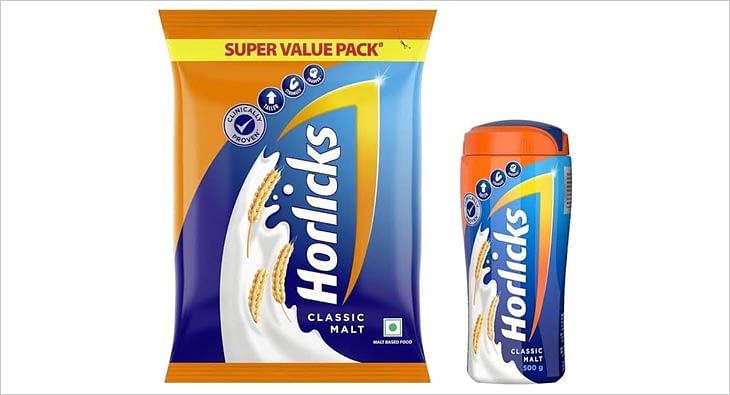TCL plans to foray into new markets in India, invests Rs 133 cr to increase its shares
TCL Corporation, a Chinese electronics and appliance manufacturer, has plans to strengthen its presence in India. It plans to do so by launching an impressive line of products as well as expanding into new markets in the country. TCL also plans to invest Rs 133 crore in a bid to increase its share in the Indian consumer electronics market.

TCL Corporation, a Chinese electronics and appliance manufacturer, has plans to strengthen its presence in India. It plans to do so by launching an impressive line of products as well as expanding into new markets in the country. TCL already has presence in markets, including Andhra Pradesh, Karnataka, Madhya Pradesh and Kolkata. The company has plans to enter specific markets including Jammu and Kashmir, Assam, Madurai and Coimbatore.
Talking about the company’s plans, Rambo Zhang, Director, TCL India holdings Pvt Ltd, said, “India being one of the fastest growing economies in the world, is one of the strategic markets in our global expansion plans. We are committed to bring to our valued Indian consumer a product line that is a perfect blend of advanced technology and innovative features. TCL will continue to play a key role in the development of cutting-edge quality products, not only for India, but for the global market as well. We will focus more on sales and grab more sales in all Indian outlets to make TCL brand products visible everywhere.”
He added, “We are eyeing to capture a much bigger market share in 2011 in LED and LCD markets compared to this year.”
ISD Group and Percept handle the advertising duties for TCL. In terms of media mix, Zhang informed that the focus would be on both ATL and BTL, but there would be an increased focus on BTL.
TCL also plans to invest Rs 133 crore in a bid to increase its share in the Indian consumer electronics market. Zhang said, “TCL will utilise this fund for operation improvement and sales and marketing, and ads will occupy not less than 3 per cent.”
In 2007, TCL had launched its new brand strategy, giving the TCL brand the new meaning of ‘The Creative Life’. This new branding strategy helped the company set a clear branding position. The long-term brand building characterised TCL to be a creative brand.
The company in its endeavour to focus and establish itself as a strong contender in the Indian market, plans to expand its sales and services network across the country. The current base of 20 branch offices and dealer network of over 5,000, which is supported by 136 service franchisees, will have an additional 10 more branch offices and another 1,000 dealers in the next one year. At present, TCL has a stronghold in southern market and is now eyeing the eastern and western regions to garner larger market share.
The company is also an original equipment manufacturer to some of the leading electronic brands in the country and has reinforced its position as a quality manufacturer with the signing of a strategic partnership with Videocon, which entitles them to supply Videocon with LCD, CRT TVs and ACs for the period of 2010-11.
Read more news about Marketing News, Advertising News, PR and Corporate Communication News, Digital News, People Movement News
For more updates, be socially connected with us onInstagram, LinkedIn, Twitter, Facebook Youtube, Whatsapp & Google News
About 60% Instagram influencers in India have fake followers: Report
As per a media report, influencer marketing platform KlugKlug has found that only 2.48 million profiles out of the 8 million have ‘high-quality’ followers
Two of three Instagram influencers in India have more than 60 per cent fake followers, a report by influencer marketing platform KlugKlug shows.
This is particularly true for the beauty and fashion sector, the report noted.
Other countries that have influencers with fake followers are Brazil, the UAE and Indonesia.
As per media reports, such Instagram fake followers can be roped in for as little as Rs 10 to a high of Rs 1,000.
According to Klug Klug India, only 2.48 million profiles out of the 8 million have high-quality followers.
A number of other categories have also been buying fake followers, media reports have noted.
As per a media expert, quoted in the reports, brands are finding it difficult to identify and curb the menace of fake followers and bots.
In a recent setback for influencers the Central Consumer Protection Authority (CCPA) has said those promoting activities like gambling and betting are equally liable as the companies promoting the same.
15% consumers enhance their user experience through virtual assistants: Kantar report
According to Soumya Mohanty, Managing Director & Chief Client Officer- South Asia, Insights Division, Kantar, less than 1% of ads get tested due to lack of time
Marketing data and analytics firm Kantar has unveiled a report that studies the burgeoning AI market to dish out actionable insights for marketers. Within AI, virtual assistants are the fastest growing segment. The report noted that 15% consumers enhanced their ‘user experience through virtual assistants’. This segment is the fastest growing at 27% YoY.
According to the study, while ‘fitness’ and ‘social media’ apps are amongst the leading categories, driving AI adoption (with an average of 2.3 AI led features embedded in these applications), segments like ‘BFSI’, ‘job search’ and ‘short video’ apps are relatively slow in AI adoption, with an average of 1.2 features each. Entertainment apps, digital commerce and pharmacy apps stand somewhere in the middle with 2.0 & 1.8 AI features being adopted, respectively.
Additionally, the report said that while 90% of marketing and sales leaders think their organisations should be using AI “often”, 60% said their organisations “rarely or never” do. Speaking to exchange4media, Soumya Mohanty, Managing Director & Chief Client Officer- South Asia, Insights Division, Kantar highlighted that currently there are a lot of organisations who know that there is something called AI, but haven’t yet figured out how it could help them holistically.
“A lot of the AI just gets used for efficiency purposes, so repetitive tasks get automated,” Mohanty pointed out. Data also plays a big role in why certain organisations are struggling with how to use AI.
For instance, Mohanty explained that in segments like D2C, telecom etc. there is a lot of primary or first-party data. So being able to leverage AI also gets easier. “It's the traditional large sort of FMCG type companies where data sits in silos. You don't really have one single source of data where it's a little difficult to use the full power of AI, because the full power of AI also needs a lot of data sitting in a structure that you can use,” she added.
So, can AI help marketers have a unified view of data? No, says Mohanty. “AI does not help marketers get a unified view of data. Once you have data in a unified way, AI can help you do a lot more with that data.”
According to her, organisations today need to have good, strong data warehousing. “It needs to make sense because a lot of the silos are also because everybody owns one part of it. A lot of people have their own analytics teams internally, so there are a lot of agendas and stakeholders. And then we say data is in silos because fundamentally, when you're doing something internally, different people have different stakes in it,” Mohanty added.
Puneet Avasthi, Senior Executive Director, South Asia, Insights Division, Kantar shared that most organisations are now heavily investing in creating first-party data sets. “Companies that have first party data about their consumers and transactions or interactions that they have with the brand are going to be able to leverage that more effectively to create sharper profiles for the brand as such for the consumer and build relevant recommendations at the right moments.
Panning out she also highlighted how AI can be leveraged to enhance market research and make it more accessible, a part of which Kantar is itself involved in. “A lot of times people say that we can't test an ad because we don't have time. So less than 1% of advertising gets tested and just gets put out. Does it work when it gets put out? It is the question the audience should answer, because so many times, it backfires,” Mohanty shared. Apparently, digital particularly doesn't get tested because organisations just do a/b testing and leave it at that.
Speaking of preferred use cases of AI, Avasthi added that various businesses and brands are looking at creating an experience for the brand that is in line with the brand's architecture and progress across all touch points. “That is something that the AI engines that are working behind can ensure, that all such interactions are consistently delivered across different virtual assistants or chatbots that are available to the consumer,” he said.
The other use case, according to Avasthi, is ensuring that there is greater visibility for the brand in the digital sphere as such, through various recommendation engines, when a certain need is being looked for and to throw up the right kind of information about the brand so that the brand message is amplified in the mind of the consumers.
Among other insights from the Kantar AI report is that 88% consumers used AI based algorithms which analysed their preferences, behaviours, and interests to create personalised recommendations for tailored experiences. This segment grew at 6 % YoY. At 21%, ‘smart home automation’ is a smaller segment but growing at 25% YoY.












 Share
Share
